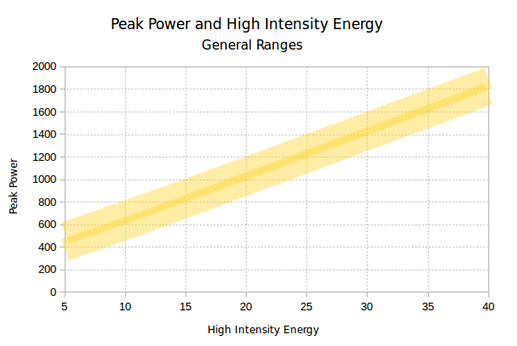I concur with @Beutelfuchs that you shouldn’t be trying to match Xert’s 3 level strain model with 5-7 traditional zones.
There’s nothing unusual about a PP of 800. The bell curve range is quite broad.
How does your HIE to PP compare to this chart?
PP is also the least sensitive value in your signature. For example, it’s not uncommon for outdoor PP to be 100-200 watts higher than what you can generate indoors. That isn’t going to throw off your training. It’s the rate of MPA decline and recovery that matter more than the absolute value.
Xert’s PDC model isn’t based on actuals, but theoretical values derived from your performance under fatigue. Numbers you should be able to achieve (in theory under the right conditions) but not necessarily will achieve. ![]()
Plenty of users won’t be able to ride at their TP for “about an hour”. Many don’t even want to try. Some of us “haven’t got time for the pain”. ![]() YMMV
YMMV
What matters is whether your TP is in the right ballpark to effectively train at the current value.
There is nothing wrong with the pyramidal approach. Many will say it’s better in the long run (pun intended).
As for testing your LTP, ride a Lucy workout (60 min example) as your next low intensity workout and see how it feels RPE-wise. Forget about watts and HR for the moment. Do you settle into comfortable conversational respiration during the RIB blues and rise into steady rhythmic breathing during intervals above LTP?
If not, play with % intensity and determine where you think LTP/LT1 should fall.
Keep in mind LT1 is a physiological marker while LTP is mathematical. They do align for many users, but not all. We are all n=1. ![]()
